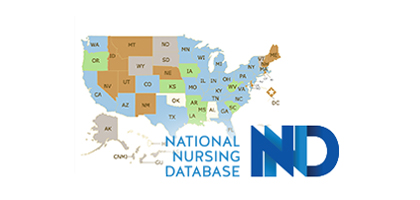Recently Completed Research

Results of the 2024 National Nursing Workforce Study
Findings from NCSBN's 2024 National Nursing Workforce Study, surveying 800,000 nurses to understand the state of the workforce since the 2022 study revealed a workforce crisis following the COVID-19 pandemic.
Findings on RN Diversity from the 2022 Workforce Survey
Data from the 2022 National Nursing Workforce Survey were used to provide a descriptive breakdown of the RN workforce by race and ethnicity and compare observed trends to national demographic shifts over the past decade. The study provides evidence to overcome potential barriers to ongoing efforts to diversify the nursing workforce and thereby inform future workforce planning. Full results were published in the April 2024 issue of the Journal of Nursing Regulation.
The Under 35 Nursing Workforce in 2022: Overworked, Under Supported, and Burned Out
A focused investigation based on RNs under 35 who participated in the 2022 National Nursing Workforce Survey, this study elucidates the sources of burnout and intent to leave among these nurses, to inform on ways to maintain the resilience of the nursing workforce. The sample in this study, representing the more than a million RNs under 35, differed in practice profile from their older counterparts, being more likely to work in hospital settings, or as staff or travel nurses. While the COVID-19 pandemic was a major disruption in many young RNs workplaces, many young RNs noted that the pandemic exacerbated existing issues in their workplace, such as staffing shortages, low pay, or administration issues. While travel nursing was used throughout the pandemic to supplement staffing shortages, young travel nurses are alarmingly more likely to report intent to leave the nursing profession by 2027. This study highlights some major challenges for the nursing workforce, suggesting that many of the issues that were stressing the nursing workforce during the pandemic would not be resolved as the acute phases of the COVID-19 subsided. This study was published in the April 2024 issues of the Journal of Nursing Regulation.
A Descriptive Investigation of the Nursing Educator Workforce in the United States
This study more closely examines how the COVID-19 pandemic impacted nurse educators embedded in academic and clinical settings, along with those educators in specialized roles. As part of the 2022 National Nursing Workforce Survey, 61,859 academic educators and 65,591 clinical educators provided demographic and working condition information. Educators in both settings reported they were profoundly impacted by the COVID-19 pandemic. The findings of this study suggest that educators’ unique and acute experiences of emotional exhaustion during the COVID-19 pandemic warrant further consideration. Policymakers, program administrators, and employers must identify and implement methods to improve working conditions to retain and recruit more nurses for education, particularly among those employed in in-demand clinical practice specialty areas. The results from this study were published in the April 2024 issue of the Journal of Nursing Regulation.
2021-2023 APRN Compact Survey Report
This is a compilation of surveys conducted by NCSBN in collaboration with five NRBs between 2021 and 2023. In total, there were 8,453 APRNs who participated in at least one survey. It is designed to determine the interest in and concerns about the current APRN Compact from the viewpoints of APRNs. This information will be used by NRBs for evidence-based regulation and to facilitate their legislative efforts. Full results of the APRN Compact study were published in the January 2024 issue of the Journal of Nursing Regulation. For more insights on the issue, see the related editorial by Dr. Maryann Alexander, PhD, RN, FAAN, titled “Prioritizing Public Protection Through Licensure Compact”.
Examining the Impact of the COVID 19 Pandemic on Burnout and Stress Among U.S. Nurses
Using a subset of data from the 2022 National Nursing Workforce Survey for analysis, this study leverages data submitted by 29,472 registered nurses (including advanced practice registered nurses) and 24,061 licensed practical nurses/licensed vocational nurses across 45 states. The study explores the ways in which the COVID 19 pandemic has amplified long-standing issues of burnout and stress among the U.S. nursing workforce and, in turn, how that has renewed concerns of projected staffing shortages. High workloads and unprecedented levels of burnout during the COVID 19 pandemic have stressed the U.S. nursing workforce, particularly younger, less experienced RNs. These factors have already resulted in high levels of turnover with the potential for further declines. Coupled with disruptions to prelicensure nursing education and comparable declines among nursing support staff, this report calls for significant policy interventions to foster a more resilient and safe U.S. nursing workforce moving forward. The full results were published in the April 2023 issue of the Journal of Nursing Regulation.

National Nursing Database
Comprehensive source of nursing licensure statistics for the U.S. and territories.
Find Out More